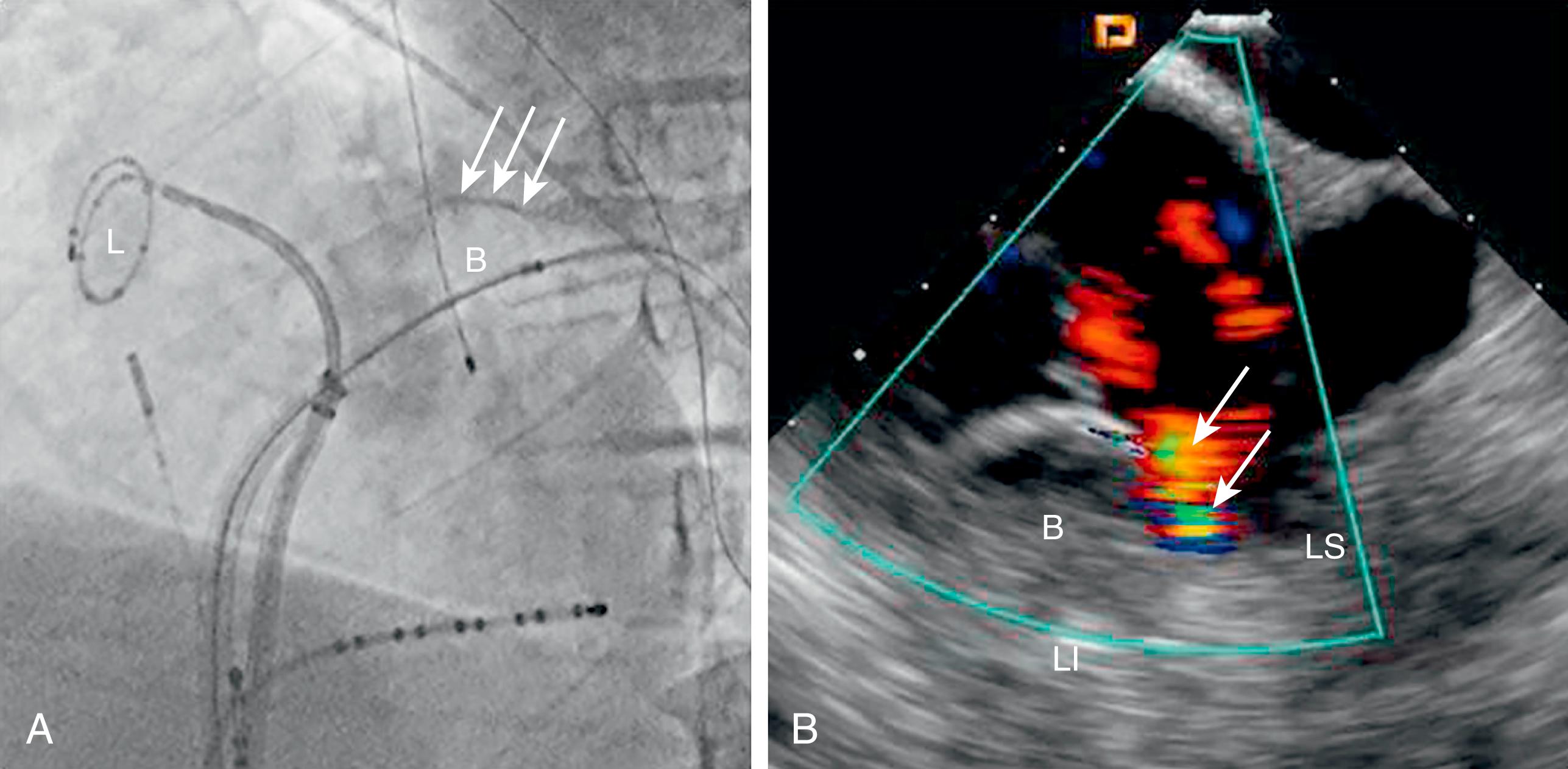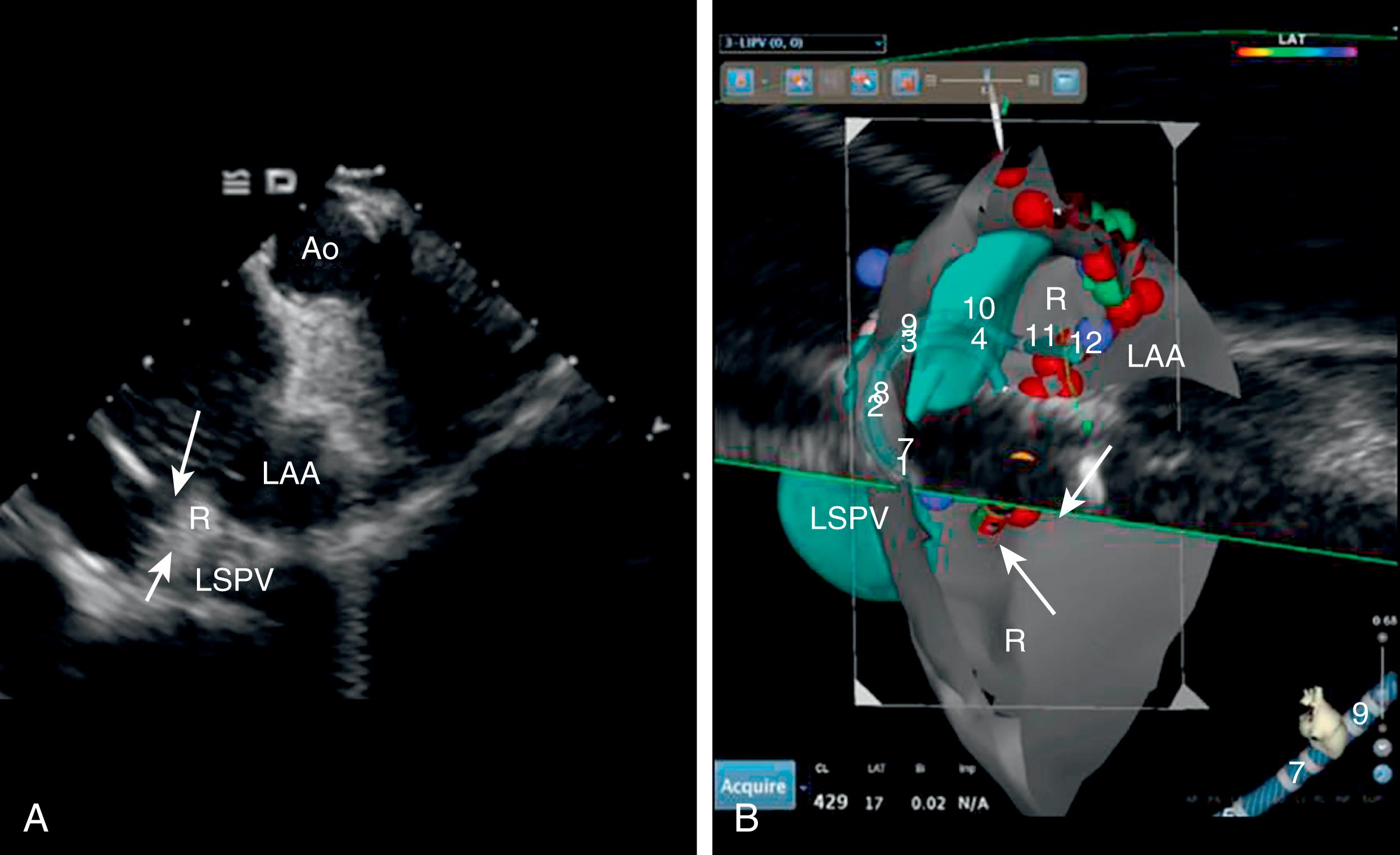Physical Address
304 North Cardinal St.
Dorchester Center, MA 02124
The rapid growth in the complexity of interventional electrophysiology made the inherent limitation of fluoroscopic imaging quite clear. Although three-dimensional (3D) electroanatomic mapping and preprocedural anatomic imaging have been important in augmenting our intraprocedural understanding of cardiac and extracardiac anatomy, these modalities are potentially limited by their artificially static nature and in difficulties with adequate registration.
Intracardiac echocardiography (ICE) provides real-time imaging of cardiac and extracardiac anatomy. Catheter visualization is also possible with ICE imaging, and most importantly for effective ablation, real-time assessment of catheter contact is easily obtained. ICE imaging provides an important reality check for electroanatomic mapping and allows for the understanding of changes in anatomy or complications that can occur during procedures. ICE imaging does have limitations; it is essentially two-dimensional (2D), although it can be incorporated into 3D systems, and its field of view is somewhat narrow. Contemporary electrophysiology procedures require the assimilation of 2D imaging systems into 3D structures. This limitation of ICE can be overcome via integration with electroanatomic mapping systems; however, when used as a stand-alone platform, it requires some expertise in echo imaging. Nonetheless, ICE provides complementary information to electroanatomic mapping, and vice versa. The combination provides significant improvements in efficacy and safety, particularly in complex anatomically based ablation procedures.
There are two commercially available types of ICE transducers: mechanical (radial) and phased array systems. The radial ICE transducer is mounted on a 9F, nonsteerable catheter and emits an imaging beam at a 15-degree forward angle, perpendicular to the long axis of the catheter. The transducer rotates at 1800 rpm and has a fixed 9-MHz frequency; it produces a 360-degree imaging plane perpendicular to the axis of the catheter. Because of limited far-field resolution and lack of steerability, the transducer is typically delivered into the chamber of interest using a curved or steerable sheath.
The phased array ICE catheter contains a 64-element transducer with a variable frequency ranging from 5 to 10 MHz, providing greater flexibility to image remote structures (up to 15 cm). The phased array transducer is also capable of full spectral and color Doppler measurements, greatly enhancing the physiologic data achievable. The transducer is mounted on a bi- or multidirectional 8F to 10F catheter. The most commonly used transducer is the AcuNav (Siemens Medical) system, which can be deflected in four directions (anterior, posterior, right, and left) in addition to a 360-degree axial rotation. The ViewFlex Xtra (Abbott Medical) transducer is another phased array catheter that offers four-way tip deflection and spectral and color Doppler packages. Unless otherwise indicated, the remainder of this chapter describes imaging with the phased array ICE system.
Although imaging with ICE requires a modest learning curve, it is a logical extension for operators with basic catheter manipulation and echocardiography skills. Most new operators find the images somewhat disorienting when taken out of context. Only after an individual echo view is integrated mentally with the operator’s inherent knowledge of intracardiac anatomy does obtaining and interpreting ICE images become intuitive. It is of paramount importance to realize that the infinite potential orientations of the transducer within the cardiac chambers produce infinite possible imaging planes. To avoid confusion, it is useful to learn a few fiducial imaging planes from which an ICE survey is easily generated. The cardinal imaging plane or “home view” is obtained by placing the ICE catheter in a neutral, mid-right atrial position, at the level of the fossa ovalis. This view naturally allows visualization of the right atrium and the tricuspid valve. Clockwise rotation of the imaging catheter will produce a “survey” from the anterior to posterior atrial images (tricuspid valve, aortic valve, mitral valve/left atrial appendage [LAA], left pulmonary veins, esophagus, and right pulmonary veins in sequence). From the home view, anterior deflection of the catheter with continuous imaging of the tricuspid valve allows safe passage into the right ventricle (RV). Clockwise rotation from the RV view allows a sequence of imaging targets (RV, long-axis left ventricle [LV] at the level of the papillary muscles, and short axis of the LV outflow tract).
The position of the fossa ovalis can be appreciated with standard fluoroscopic techniques; however, ICE imaging provides increased safety and flexibility during transseptal puncture. In many labs, transseptal puncture for atrial fibrillation (AF) procedures is performed with double anticoagulation (maintained oral anticoagulant plus intravenous heparin), leaving no margin for error. The fossa ovalis is visualized with the ICE catheter in a mid-right atrium position, and then it is gently rotated in a clockwise fashion (approximately 45–90 degrees from the home view). Variations in the left atrial target zone (e.g., more anterior for balloon ablation devices or LV access, more posterior for approaches to the LAA) are easily appreciated ( Fig. 66.1 ). ICE imaging also facilitates management of anatomic variants, such as lipomatous hypertrophy and atrial septal aneurysms, and difficult situations such as navigating around atrial septal closure devices or scarring from prior transseptal procedures. ,

ICE imaging is useful in multiple steps during AF ablation procedures: visualization of the LAA (see later), transseptal puncture, assessment of pulmonary vein anatomy, and positioning of catheters and other ablation devices ( Fig. 66.2 ). The majority of the imaging targets for AF ablation are obtained from the right atrial, fossa ovalis view. The clockwise location discloses the LAA (60 degrees), left pulmonary veins (90 degrees), posterior atrium and adjacent esophagus (135 degrees), and right pulmonary veins (180 degrees). A useful view for visualizing the LAA and tracking catheter movements along the ridge between the appendage and the left pulmonary veins is obtained by positioning the imaging catheter within the RV outflow tract ( Fig. 66.3 ).


Become a Clinical Tree membership for Full access and enjoy Unlimited articles
If you are a member. Log in here